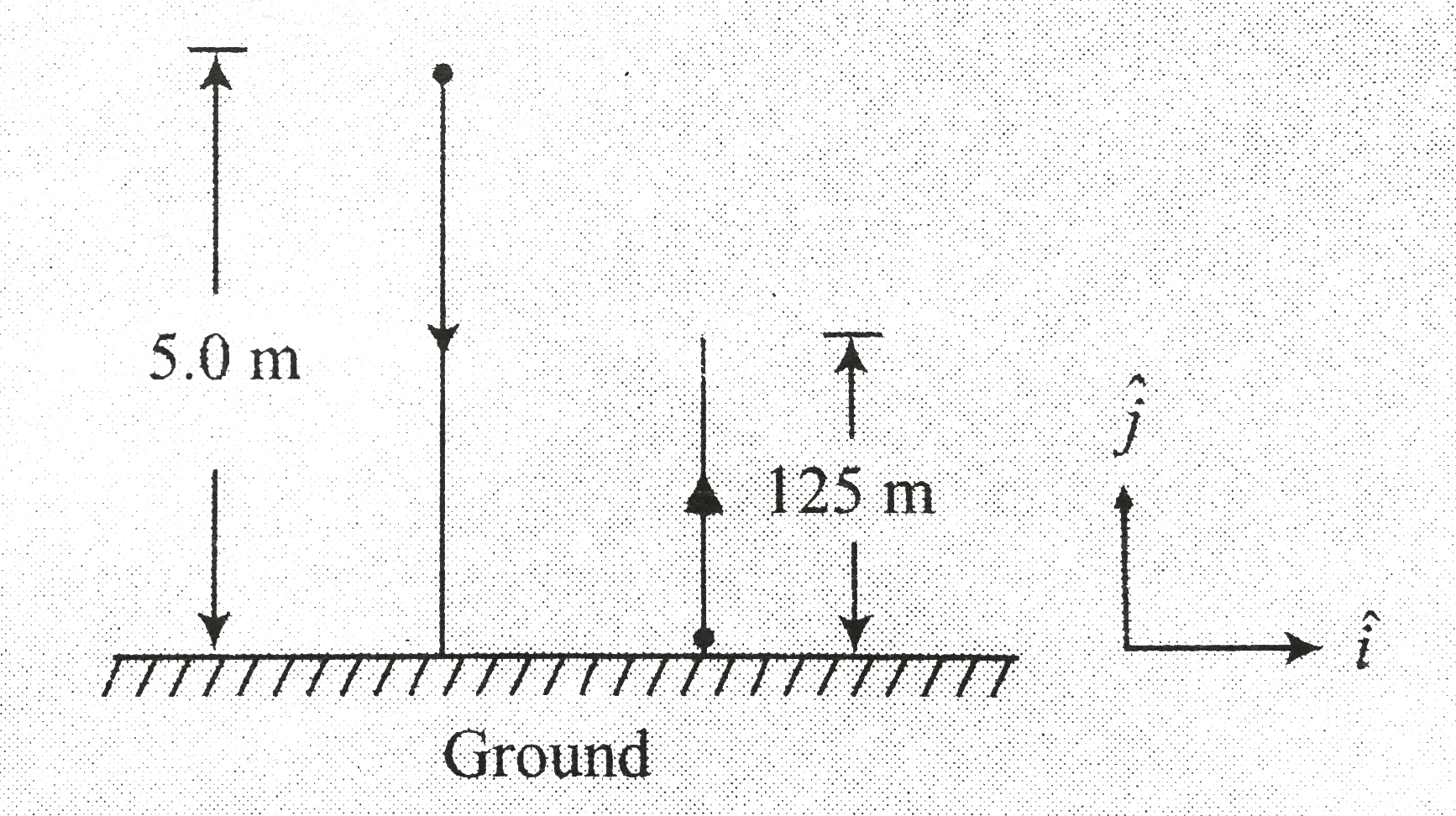A ball of mass 100 gram falls from 20 m height on floor and rebounds to 5m. Time of contact is 0.02s. Find average force acting on it during impact. (g = 10 m/s2)
120 N
100 N
200 N
150 N
The correct Answer is:D
To find the average force acting on the ball during impact, we can follow these steps:
Step 1: Convert mass to kilograms
The mass of the ball is given as 100 grams. We need to convert this to kilograms for our calculations.
m=100grams=0.1kg
Step 2: Calculate the initial velocity just before impact
The ball falls from a height of 20 m. We can use the equation of motion to find the velocity just before impact (using the conservation of energy):
vi=√2gh
where g=10m/s2 and h=20m.
vi=√2×10×20=√400=20m/s
Step 3: Calculate the final velocity just after rebound
The ball rebounds to a height of 5 m. We can again use the conservation of energy to find the velocity just after the rebound:
vf=√2gh
where h=5m.
vf=√2×10×5=√100=10m/s
Step 4: Calculate the change in momentum
The change in momentum (ΔP) can be calculated as:
ΔP=mvf−mvi
Substituting the values:
ΔP=0.1×10−0.1×20=1−2=−1kg m/s
Step 5: Calculate the average force
The average force (Favg) can be calculated using the formula:
Favg=ΔPΔt
where Δt=0.02s.
Favg=−10.02=−50N
Step 6: Interpret the result
The negative sign indicates that the force is acting in the opposite direction of the initial motion (upward). The magnitude of the average force is:
Favg=50N
Final Answer
The average force acting on the ball during impact is 50 N.
---
The mass of the ball is given as 100 grams. We need to convert this to kilograms for our calculations.
m=100grams=0.1kg
The ball falls from a height of 20 m. We can use the equation of motion to find the velocity just before impact (using the conservation of energy):
vi=√2gh
where g=10m/s2 and h=20m.
vi=√2×10×20=√400=20m/s
The ball rebounds to a height of 5 m. We can again use the conservation of energy to find the velocity just after the rebound:
vf=√2gh
where h=5m.
vf=√2×10×5=√100=10m/s
The change in momentum (ΔP) can be calculated as:
ΔP=mvf−mvi
Substituting the values:
ΔP=0.1×10−0.1×20=1−2=−1kg m/s
The average force (Favg) can be calculated using the formula:
Favg=ΔPΔt
where Δt=0.02s.
Favg=−10.02=−50N
The negative sign indicates that the force is acting in the opposite direction of the initial motion (upward). The magnitude of the average force is:
Favg=50N
The average force acting on the ball during impact is 50 N.
Similar Questions
A rubber ball of mass 50g falls from a height of 100cm and rebounds to a height of 50cm Find the impulse and average force between the ball and the ground, if time of contact is 0.1s .
View SolutionA rubber ball of mass 50 g falls from a height of 5m and rebounds to a height of 1.25 m. Find the impulse and the average force between the ball and the ground if the time for which they are in contact was 0.1s
 View Solution
View Solution
Knowledge Check
- Question 1 - Select One
A ball falls from 20 m height on floor and rebounds to 5 m. Time of contact is 0.02 s. Find acceleration during impact.
A1200ms−2B1000ms−2C2000ms−2D1500ms−2 - Question 2 - Select One
A body falling from a height of 10m rebounds from the hard floor . It
A0.89B0.56C0.23D0.18 - Question 3 - Select One
A ball falls on the ground from a height of 10m and rebounds to a height of 8m. What is the percentage loss kinetic energy of the ball? (g=10m/s2)
A0.2B0.3C0.1D155
A ball of mass 1 kg is dropped from 20 m height on ground and it rebounds to height 5m. Find magnitude of change in momentum during its collision with the ground. (Take g=10m/s2)
View SolutionA glass ball whose mass is 10 g falls from a height of 40 m and rebounds to a height of 10 m. Find the impulse and the average force between the glass ball and the floor if the time during which they are in contact is 0.1 s.
View SolutionA ball falls from a height 20m on to a horizontal plane and rebound to a height of 5/64m after 4 collisions.Find the coefficient of restitution.
View SolutionA ball of mass 500 g falls from a height of 4 m Find the K.E. of the ball when it reaches the ground. (Take g =9.8 ms2)
View SolutionA tennis ball is dropped on the floor from a height of 20m. It rebounds to a height of 5m. If the ball was in contact with the floor for 0.01s. What was its average acceleration during contact? (g=10m/s2)
View Solution

